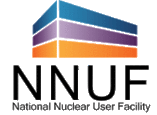About
The National Nuclear User Facility (NNUF) Successor project is a £5m EPSRC investment in the UK’s nuclear future. It is the third NNUF project and will provide access to state-of-the-art experimental facilities for research and development in nuclear science and technology.
NNUF was established to support the Government Nuclear Industrial Strategy and launched in March 2013, and had substantial (£80m) additional funding awarded in 2019. There are currently 30 facilities housed in 12 universities, the UK Atomic Energy Authority, the National Nuclear Laboratory and Diamond Light Source, most of them available for external access to undertake work on nuclear materials.
The £5m award also includes £1.5m earmarked for post irradiation examination of samples irradiated in the NNUF 2 NIFT-E campaign. Details of this program will be announced later in 2025.
NNUF Successor will run from April 2025 until April 2030, providing access for UK based researchers to facilities at UK universities and national laboratories, including the neutron source at Birmingham University, investment in facilities for nuclear robotics at Bristol, Manchester and UKAEA, and a new active Atom Probe Tomography facility in Oxford.
Information about the impact of NNUF can be viewed on the impact page of this website. According to Scopus, there are currently over 215 publications acknowledging support from NNUF (which have been cited over 1,400 times).


